
A scrollbar is an interaction technique or widget in which continuous text, pictures, or any other content can be scrolled in a predetermined direction on a computer display, window, or viewport so that all of the content can be viewed, even if only a fraction of the content can be seen on a device's screen at one time. It offers a solution to the problem of navigation to a known or unknown location within a two-dimensional information space. It was also known as a handle in the very first GUIs. They are present in a wide range of electronic devices including computers, graphing calculators, mobile phones, and portable media players. The user interacts with the scrollbar elements using some method of direct action, the scrollbar translates that action into scrolling commands, and the user receives feedback through a visual updating of both the scrollbar elements and the scrolled content.

A broadaxe is a large-(broad) headed axe. There are two categories of cutting edge on broadaxes, both are used for shaping logs by hewing. On one type, one side is flat and the other side beveled, a basilled edge, also called a side axe, single bevel, or chisle-edged axe. On the other type, both sides are beveled, sometimes called a double bevel axe, which produces a scalloped cut. On the basilled broadaxe the handle may curve away from the flat side to allow an optimal stance by the hewer in relation to the hewn surface. The flat blade is to make the flat surface but can only be worked from one direction and are right-handed or left-handed. The double bevel axe has a straight handle can be swung with either side against the wood. A double beveled broad axe can be used for chopping or notching and hewing. When used for hewing, a notch is chopped in the side of the log down to a marked line, called scoring. The pieces of wood between these notches are removed with an axe called joggling and then the remaining wood is chopped away to the line.
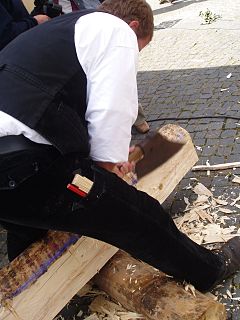
In woodworking, hewing is the process of converting a log from its rounded natural form into lumber (timber) with more or less flat surfaces using primarily an axe. It is an ancient method, and before the advent of the industrial-era type of sawmills, it was a standard way of squaring up wooden beams for timber framing. Today it is still used occasionally for that purpose by anyone who has logs, needs beams, and cannot or would prefer not to pay for finished lumber. Thus homesteaders on frugal budgets, for example, may hew their own lumber rather than buy it.

A nail clipper is a hand tool used to trim fingernails, toenails and hangnails.

A burr puzzle is an interlocking puzzle consisting of notched sticks, combined to make one three-dimensional, usually symmetrical unit. These puzzles are traditionally made of wood, but versions made of plastic or metal can also be found. Quality burr puzzles are usually precision-made for easy sliding and accurate fitting of the pieces. In recent years the definition of "burr" is expanding, as puzzle designers use this name for puzzles not necessarily of stick-based pieces.
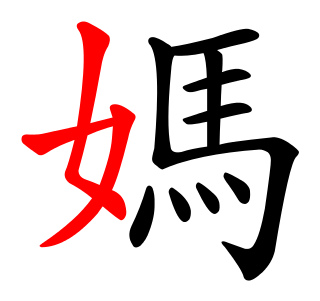
A Chinese radical or indexing component is a graphical component of a Chinese character under which the character is traditionally listed in a Chinese dictionary. This component is often a semantic indicator similar to a morpheme, though sometimes it may be a phonetic component or even an artificially extracted portion of the character. In some cases the original semantic or phonological connection has become obscure, owing to changes in character meaning or pronunciation over time.

A wrench or spanner is a tool used to provide grip and mechanical advantage in applying torque to turn objects—usually rotary fasteners, such as nuts and bolts—or keep them from turning.

A stapler is a mechanical device that joins pages of paper or similar material by driving a thin metal staple through the sheets and folding the ends. Staplers are widely used in government, business, offices, work places, homes and schools.
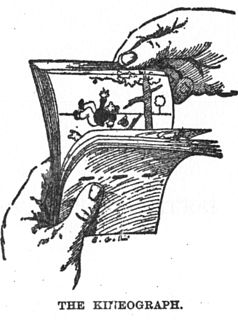
A flip book or flick book is a booklet with a series of images that very gradually change from one page to the next, so that when the pages are viewed in quick succession, the images appear to animate by simulating motion or some other change. Often, flip books are illustrated books for children, but may also be geared toward adults and employ a series of photographs rather than drawings. Flip books are not always separate books, but may appear as an added feature in ordinary books or magazines, frequently, using the page corners. Software packages and websites are also available that convert digital video files into custom-made flip books.
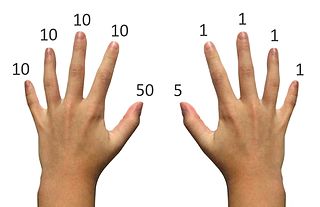
Chisanbop or chisenbop is an abacus-like finger counting method used to perform basic mathematical operations. According to The Complete Book of Chisanbop by Hang Young Pai, chisanbop was created in the 1940s in Korea by Sung Jin Pai and revised by his son Hang Young Pai. He then brought the system to the United States c. 1977.

Padlocks are portable locks with a shackle that may be passed through an opening to prevent use, theft, vandalism or harm.

Book design is the art of incorporating the content, style, format, design, and sequence of the various components and elements of a book into a coherent unit. In the words of renowned typographer Jan Tschichold (1902–1974), book design, "though largely forgotten today, [relies upon] methods and rules upon which it is impossible to improve, [and which] have been developed over centuries. To produce perfect books, these rules have to be brought back to life and applied". Richard Hendel describes book design as "an arcane subject", and refers to the need for a context to understand what that means.
In music, fingering, or on stringed instruments stopping, is the choice of which fingers and hand positions to use when playing certain musical instruments. Fingering typically changes throughout a piece; the challenge of choosing good fingering for a piece is to make the hand movements as comfortable as possible without changing hand position too often. A fingering can be the result of the working process of the composer, who puts it into the manuscript, an editor, who adds it into the printed score, or the performer, who puts his or her own fingering in the score or in performance.
Fingering...also stopping...(1) A system of symbols for the fingers of the hand used to associate specific notes with specific fingers....(2)Control of finger movements and position to achieve physiological efficiency, acoustical accuracy [frequency and amplitude] and musical articulation.

Wood wool, known primarily as excelsior in North America, is a product made of wood slivers cut from logs. It is mainly used in packaging, for cooling pads in home evaporative cooling systems known as swamp coolers, for erosion control mats, and as a raw material for the production of other products such as bonded wood wool boards. In the past it was used to fill stuffed toys. It is also sometimes used by taxidermists to construct the armatures of taxidermy mounts.

Google Patents is a search engine from Google that indexes patents and patent applications.
Reference is a relationship between objects in which one object designates, or acts as a means by which to connect to or link to, another object. The first object in this relation is said to refer to the second object. It is called a name for the second object. The second object, the one to which the first object refers, is called the referent of the first object. A name is usually a phrase or expression, or some other symbolic representation. Its referent may be anything – a material object, a person, an event, an activity, or an abstract concept.
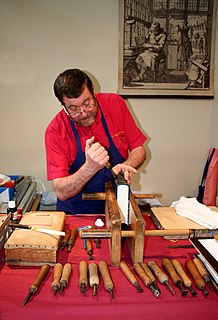
Bookbinding is the process of physically assembling a book of codex format from an ordered stack of paper sheets that are folded together into sections or sometimes left as a stack of individual sheets. The stack (signature) is then bound together along one edge by either sewing with thread through the folds or by a layer of flexible adhesive. Alternative methods of binding that are cheaper but less permanent include loose-leaf rings, individual screw posts or binding posts, twin loop spine coils, plastic spiral coils, and plastic spine combs. For protection, the bound stack is either wrapped in a flexible cover or attached to stiff boards. Finally, an attractive cover is adhered to the boards, including identifying information and decoration. Book artists or specialists in book decoration can also greatly enhance a book's content by creating book-like objects with artistic merit of exceptional quality.
Swiss-German Sign Language is the primary deaf sign language of the German-speaking part of Switzerland and of Liechtenstein. The language was established around 1828. In 2011 it was estimated that 7,500 deaf and 13,000 hearing people use DSGS. There are six dialects which developed in boarding schools for the deaf in Zürich, Bern, Basel, Lucerne, and St. Gallen, as well as in Liechtenstein.
An edge index is a form of index that consists of marks on the edges of the pages of a printed work. These marks are step-like printed and usually contain order words, letters, or numbers,. Usually, they are colored and help to find desired points, especially in reference works. They are created by printing to the edge of the sheet so that they are visible on the closed books' edge.















